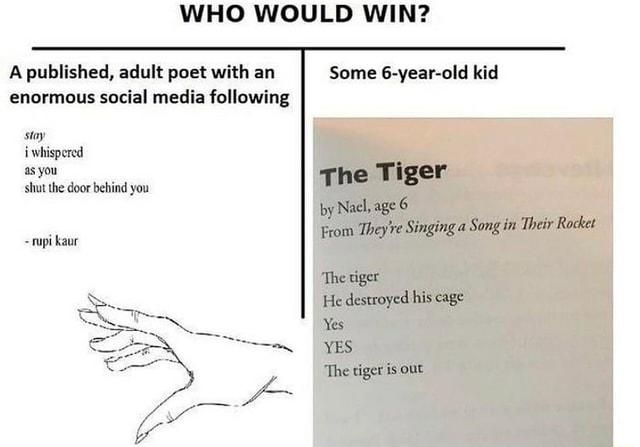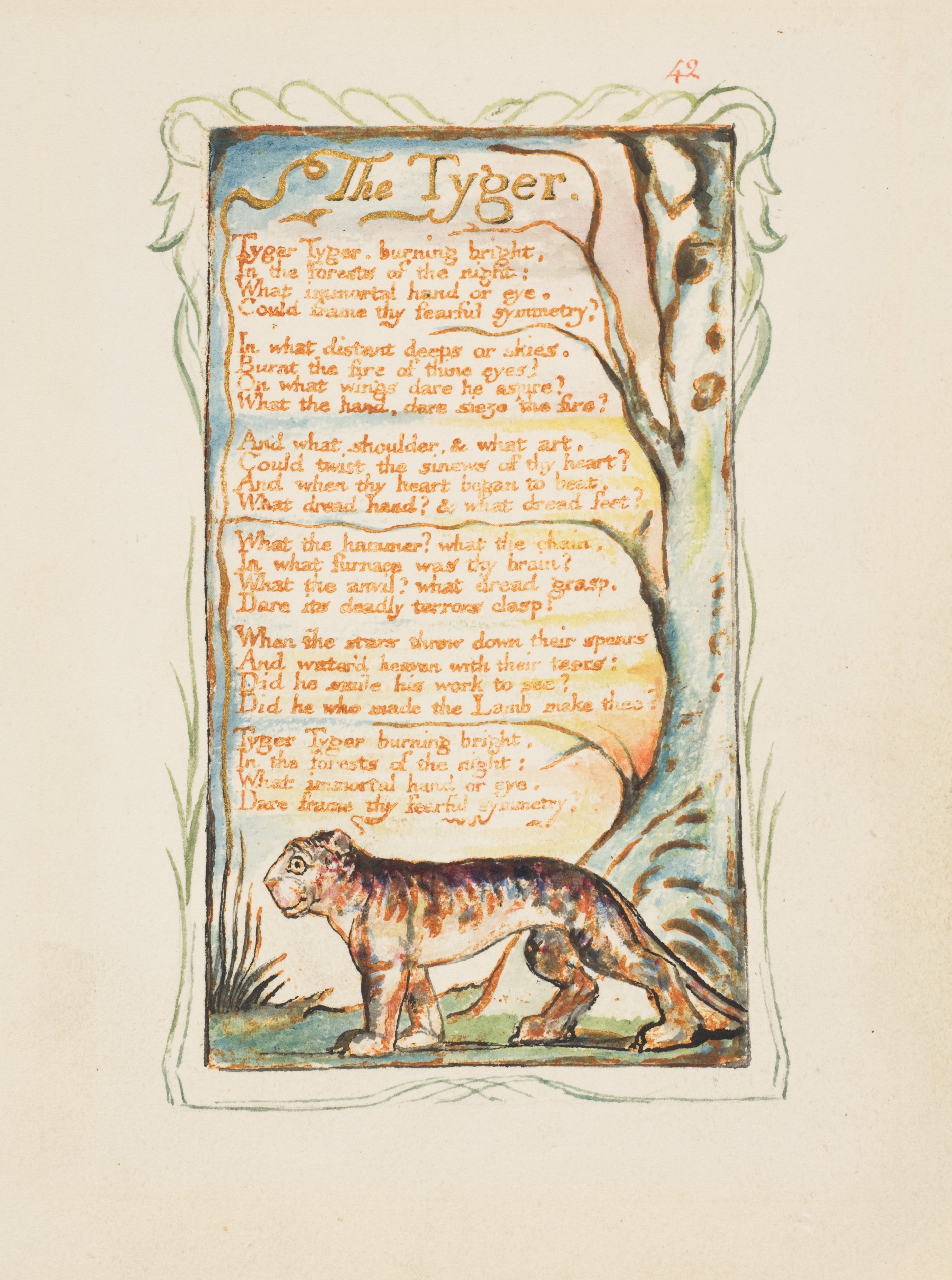The Tyger is a poem written by William Blake in the late 18th century. It is one of the most famous and frequently analyzed poems from his collection, "Songs of Experience." The poem consists of six quatrains, each of which poses a question about the tyger, a symbol of the power and mystery of nature.
The poem begins with the question, "Tyger! Tyger! Burning bright / In the forests of the night, / What immortal hand or eye / Could frame thy fearful symmetry?" Here, the speaker is in awe of the tyger's beauty and power, and wonders who could have created such a creature. The use of the word "immortal" suggests that the speaker sees the tyger as a divine being, perhaps even a symbol of God.
In the second quatrain, the speaker asks, "In what distant deeps or skies / Burnt the fire of thine eyes? / On what wings dare he aspire? / What the hand, dare sieze the fire?" These lines continue the theme of the tyger's power and mystery, as the speaker wonders where the fire in the tyger's eyes came from and how it was able to soar on wings and seize fire.
The third quatrain shifts focus to the tyger's creation, with the speaker asking, "And when thy heart began to beat, / What dread hand? & what dread feet? / What the hammer? what the chain, / In what furnace was thy brain?" These lines explore the process of the tyger's creation and suggest that it was a complex and possibly even frightening process.
In the fourth quatrain, the speaker continues to contemplate the tyger's creation, asking, "When the stars threw down their spears, / And water'd heaven with their tears, / Did he who made the Lamb make thee?" This line introduces the concept of duality, as the tyger is compared to the lamb, a symbol of innocence and purity. The speaker wonders if the same being that created the lamb also created the tyger, suggesting a tension between good and evil.
The fifth quatrain returns to the theme of the tyger's power, with the speaker asking, "Tyger! Tyger! burning bright / In the forests of the night, / What immortal hand or eye / Dare frame thy fearful symmetry?" This repetition of the first quatrain highlights the speaker's ongoing fascination with the tyger and its symbolism.
In the final quatrain, the speaker concludes with the question, "Did he who made the Lamb make thee?" This line brings the poem full circle, reminding the reader of the tension between good and evil and the mystery of the tyger's creation.
Overall, The Tyger is a powerful and thought-provoking poem that invites the reader to consider the nature of creation and the duality of good and evil. Its use of vivid imagery and repetition adds to its impact, making it a timeless and enduring work of literature.




.jpg)




